#interiordesigncourses
Text
Paving the Path to Success: Interior Design Institute in Kolkata
Interior design means practices of improving the aesthetic and functional aspects of the interior space of a building. It works on any other physical structure as well. However, interior design stands apart from more conventional types of embellishment. It is in a league of its own. Interior design necessitates meticulous planning. It also needs thoughtful consideration and precise coordination of all decorative elements. It should be within a given space. The designer’s intent requires that everything in a room must harmoniously work together. It includes the paint, fixtures, furniture, and architectural details. Doing Under graduation In Interior Designing In Kolkata is the perfect selection. It works for starting a career in it.
#InteriorDesigningCourses#interiordesigntraininginKolkata#interiordesigntrainingschoolinKolkata#InteriorDesignCourses#InteriorDesigningCoursesinKolkata#UndergraduationinInteriorDesigninginKolkata
0 notes
Text
2024 Interior Design Trends: Inviting Spaces and Eye-Catching Accents in the world

2024, interior design trends are shifting towards prioritizing comfort and personal expression
As we step into 2024, interior design trends are shifting towards prioritizing comfort and personal expression, while still incorporating eye-catching elements that spark conversation. Think cozy sanctuaries that reflect your unique personality, with bold accents that add a touch of whimsy and sophistication.
Here are some of the hottest trends to watch out for in the coming year:
1. Global Fusion:
Travel restrictions are easing, and our homes are becoming havens for global inspiration. Expect to see a blend of cultural influences, with furniture, textiles, and artwork from around the world coming together to create a unique and eclectic look. Think Moroccan rugs paired with Scandinavian furniture and Japanese-inspired artwork.
2. Earthy Elegance:
Nature is taking center stage, with organic materials like wood, stone, and woven textures adding warmth and texture to our spaces. Earthy color palettes inspired by the outdoors, such as terracotta, sage green, and warm ochre, will be popular, creating a sense of calm and grounding.
3. Sculptural Curves:
Sharp lines and minimalist aesthetics are giving way to softer, more organic shapes. Curved furniture, arches, and rounded doorways will add a touch of whimsy and femininity to your space. This trend also extends to lighting and decor, with sculptural pieces that make a statement.
4. Playful Patterns:
Wallpaper is making a comeback, but in a bold and playful way. Geometric prints, vibrant florals, and unexpected patterns will add visual interest and personality to your walls. Don't be afraid to mix and match patterns for a truly unique look.
5. Textural Delights:
Tactile experiences are key in 2024. Layering different textures, such as velvet, boucle, and linen, will create a sense of richness and depth. Don't forget about throws, pillows, and rugs – they're perfect for adding pops of texture and color.
6. Sustainable Choices:
Eco-conscious design is more than just a trend; it's a way of life. Consumers are increasingly looking for sustainable furniture and decor made from recycled materials or with responsible manufacturing practices. Vintage pieces and upcycled furniture are also making a big comeback, adding a touch of history and character to your space.
7. Wellness Retreats:
Our homes are becoming sanctuaries for well-being. Expect to see an emphasis on creating spaces that promote relaxation and mindfulness. This could include incorporating natural light, adding plants, creating cozy reading nooks, or installing water features.
Remember, these trends are just a starting point. The most important thing is to create a space that reflects your own unique style and personality. Don't be afraid to experiment and have fun!
Bonus Trend: Local Touches
While global influences are hot, there's also a growing appreciation for incorporating local elements into your design. This could mean using locally sourced materials, supporting artisans from your community, or drawing inspiration from the architecture and style of your region. Weaving in these local touches can create a truly personal and meaningful space.
No matter where you live in the world, these trends offer a glimpse into the exciting world of interior design in 2024. So get ready to embrace cozy comfort, bold accents, and a touch of global flair as you create your own personal haven.
2024, interior design trends are shifting towards prioritizing comfort and personal expression
Color Palette Evolution: 2024 and Beyond

interior
Dominant Colors for 2024:
Earthy Neutrals: Warm beiges, taupes, and terracotta tones reflecting a desire for groundedness and comfort. Think burnt orange, ochre, and clay hues.
Uplifting Brights: Pops of vibrant and joyful colors like emerald green, cerulean blue, and fuchsia to counteract pandemic fatigue and add optimism.
Serene Blues: Palettes featuring calming azure, sky blue, and lavender shades, inspired by the natural world and a quest for tranquility.
Accent Color Trends:
Metallic Accents: Gold, silver, and bronze accents adding a touch of luxury and elegance, particularly in home decor and fashion.
Greenery Accents: Pops of sage green, olive, and fern adding a touch of nature and organic feel to any palette.
Unexpected Contrasts: Bold contrasting accents like mustard yellow or hot pink against muted or dark backgrounds for a playful and impactful effect.
Influence of Pantone's Color of the Year:
The 2024 Pantone Color of the Year, "Viva Magenta," has undoubtedly influenced color trends. This vibrant and energizing pink-purple shade symbolizes resilience, optimism, and joyful expression. We see its influence in fashion, design, and lifestyle choices, often paired with contrasting neutrals or complementary blues and greens.
Looking Beyond 2024:
It's important to remember that trends are not static. While these colors and themes are prominent in 2024, new influences and innovations will emerge in the coming years. Here are some potential trends to watch for:
Tech-Inspired Palettes: Neon-like brights and holographic accents influenced by gaming and virtual reality aesthetics.
Sustainable Colors: Increased focus on natural dyes, recycled materials, and eco-friendly color choices.
Global Fusion: Inspiration drawn from diverse cultures and traditional color palettes, leading to richer and more vibrant combinations.
Remember, the best color palette is the one that speaks to you and your individual style. Don't be afraid to experiment and combine different trends to create something unique and personal.
Sustainable Interior Design: Building a Greener Future
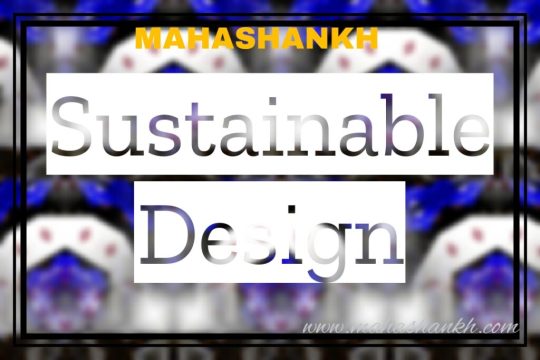
sustainable interior design
Sustainability is no longer a buzzword, but a crucial aspect of design, especially in interior spaces where we spend considerable time. Here's a dive into eco-friendly practices you can incorporate:
Eco-friendly Materials:
Natural Materials: Opt for bamboo, cork, hemp, reclaimed wood, and recycled textiles. These are renewable, biodegradable, and often require less processing, reducing environmental impact.
Locally Sourced Materials: Minimize transportation emissions by choosing materials produced close to your location. Supporting local artisans also empowers communities.
Recycled and Upcycled Materials: Give salvaged materials a new life! Use vintage furniture, repurpose old bottles as vases, or create art from discarded textiles.
Energy-Efficient Lighting and Appliances:
LED Lighting: Switch to LED bulbs for up to 80% energy savings and significantly longer lifespans.
Natural Light: Design spaces to maximize natural light with large windows and skylights. This reduces reliance on artificial lighting and creates a brighter, healthier environment.
Smart Technology: Invest in smart thermostats, power strips, and appliances that automatically adjust energy usage based on occupancy and schedule.
Green Building Practices:
Passive Design: Utilize passive solar heating and cooling strategies to minimize dependence on HVAC systems. Consider cross-ventilation for natural air circulation.
Water Conservation: Install low-flow faucets and showerheads, use greywater recycling systems, and choose water-efficient landscaping.
Non-toxic Materials: Avoid materials with harmful chemicals like volatile organic compounds (VOCs) for better indoor air quality and occupant health.
Bonus Tips:
Invest in Energy Audits: Identify areas for improvement in your home's energy efficiency through professional audits.
Support Sustainable Brands: Choose brands committed to responsible manufacturing and ethical sourcing.
DIY and Repurpose: Embrace creativity! Try DIY furniture projects from sustainable materials or give old items a new purpose.
By incorporating these sustainable design principles, you can create beautiful and comfortable spaces that minimize your environmental footprint and contribute to a healthier planet. Remember, even small changes can make a big difference!
Please feel free to ask if you have any specific questions about implementing these practices in your home or design project.
Tech Integration: Transforming Your Home with Technology

tech integration
Tech is no longer just an add-on to our homes; it's becoming an integral part of the design fabric. Let's explore how to seamlessly integrate high-tech elements into your living space:
Smart Home Technology:
Automated Lighting: Control lights remotely or set them to adjust automatically based on time of day, mood, or occupancy.
Temperature Control: Smart thermostats learn your preferences and optimize heating and cooling for improved comfort and energy efficiency.
Voice-Activated Assistants: Siri, Alexa, and Google Assistant allow you to control your home with your voice, from adjusting lights to playing music to setting alarms.
Security Systems: Monitor your home remotely, receive alerts about potential threats, and control alarms or locks for enhanced security.
IoT Devices for a Connected Home:
Smart Appliances: From refrigerators that reorder groceries to ovens that preheat remotely, smart appliances simplify daily tasks and enhance convenience.
Water Leak Sensors: Prevent costly damage with sensors that detect leaks and automatically shut off water valves.
Air Quality Monitors: Monitor air quality and adjust ventilation or filtration systems to create a healthier environment.
Smart Speakers and Entertainment Systems: Immerse yourself in high-quality music and movies with connected speakers and sound systems.
High-Tech Furniture and Accessories:
Charging Furniture: Integrate wireless charging into tables, nightstands, or even lamps for effortless device charging.
Interactive Mirrors: Mirrors can display weather updates, news feeds, or personalized messages, adding functionality and a futuristic touch.
Projecting Artworks: Transform walls into dynamic canvases with projectors that display artworks, photographs, or even personalized messages.
Smart Kitchen Appliances: Coffee makers that brew your perfect cup on command, refrigerators with built-in touchscreens, and smart ovens that cook for you are just a few examples of the culinary tech revolution.
Remember:
Prioritize seamless integration: Choose technology that complements your existing design aesthetic and doesn't look like an afterthought.
Focus on functionality: Don't get caught up in gimmicks. Choose tech that solves specific problems or enhances your lifestyle.
Security and privacy: Be mindful of data security and privacy when integrating smart devices into your home.
Tech integration can elevate your home into a functional, convenient, and even magical space. With careful planning and a focus on your needs, you can create a truly connected and comfortable living environment.
Biophilic Interior Design: Bring the Outdoors In for a Well-being Boost
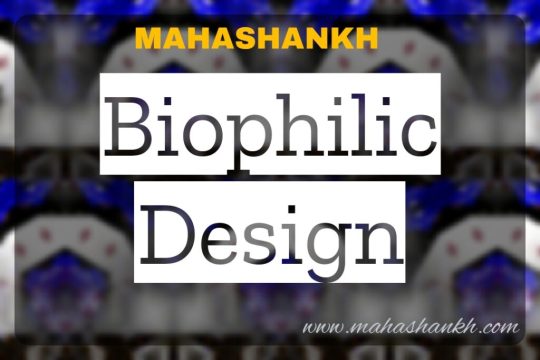
biophilic design
Biophilic design, the practice of incorporating elements of nature into the built environment, is more than just a trend; it's a growing movement based on a fundamental human need to connect with the natural world.
Nature Comes Inside:
Benefits of Biophilic Interior Design:
Biophilic design offers a multitude of benefits that go beyond aesthetics:
Reduced stress and anxiety: Studies have shown that exposure to natural elements can lower stress hormones and promote relaxation. Imagine a serene living room with a cascading water feature or a cozy bedroom with calming forest wallpaper.
Improved cognitive function: Research suggests that biophilic elements can enhance focus, creativity, and problem-solving abilities. Picture a well-lit home office with a vibrant living wall or a study nook nestled amidst greenery.
Enhanced productivity: Studies have found that employees in biophilic offices report increased productivity and engagement. Consider incorporating natural elements into your workspace, like strategically placed plants or views of nature.
Boosted well-being: Biophilic design can contribute to a sense of overall well-being, encouraging physical and mental health. Think of taking a relaxing bath in a bathroom adorned with natural stone and spa-like greenery.
Indoor Plants: Nature's Little Helpers:
Indoor plants are a fantastic way to introduce biophilic elements into any space. They contribute to a healthier environment by:
- Purifying the air: Plants remove toxins and pollutants from the air, creating a cleaner and healthier atmosphere.
- Boosting humidity: Certain plants add moisture to the air, making it more comfortable and beneficial for your skin and respiratory system.
- Reducing noise: Plants can absorb sound waves, dampening background noise and creating a more peaceful ambiance.
- Adding visual interest: From cascading vines to sculptural succulents, plants provide pops of color and texture, enhancing the visual appeal of any space.
Biophilic Design for Everyone:
Whether you live in a sprawling apartment or a cozy cottage, there are countless ways to incorporate biophilic design:
Natural light: Maximize natural light with large windows, skylights, or light tubes.
Natural materials: Use wood, stone, bamboo, and other natural materials for flooring, furniture, and accents.
Natural textures: Incorporate textures like rough-hewn wood, smooth pebbles, or flowing water features.
Natural colors: Opt for earthy tones, greens, blues, and soft whites to create a calming and natural atmosphere.
Water features: From small fountains to cascading waterfalls, water elements add a soothing and dynamic touch.
Living walls and vertical gardens: Utilize vertical space for greenery, creating a living wall or a lush indoor garden.
Animal motifs: Bring in natural patterns and textures through animal prints, artwork, or decorative objects.
Remember, biophilic design is about creating a connection with nature that feels authentic to you. So experiment, have fun, and let your creativity flow!
With a little effort, you can transform your home into a haven of well-being, inspired by the beauty and tranquility of the natural world.
Multifunctional Spaces: Making the Most of Your Tiny Empire

Multifunctional Spaces
Living in small spaces doesn't have to mean sacrificing comfort or style. The key lies in embracing multifunctional spaces and embracing furniture that plays a starring role in this transformation. Let's delve into the world of adaptability and versatility:
Adaptable Furniture Champs:
Foldable and Convertible Furniture: From nesting tables that expand for dinners to sofas that magically morph into beds, these space-saving heroes are masters of disguise. Think Murphy beds that disappear into walls, ottomans that become coffee tables, and dining tables that shrink for solo nights.
Modular Designs: Think building blocks for grown-ups! Modular furniture allows you to mix and match pieces to create configurations that suit your needs. Add a shelving unit to your desk for storage, or rearrange modular sofas to create cozy corners or open up the space.
Multi-purpose Furniture: One piece, endless possibilities! Ottomans with storage compartments, benches that double as dining tables, or beds with built-in desks - these multitaskers keep clutter at bay and maximize functionality.
The Rise of the Flexible:
- Sliding Walls and Screens: Divide and conquer! Sliding walls or screens allow you to transform a single room into separate spaces for work, sleep, or relaxation.
- Pop-Up Desks and Workstations: Need a dedicated workspace but limited floor space? Hidden desks in cabinets, fold-down counters, or even transformable furniture legs can create instant work nooks.
- Vertical Thinking: Utilize every inch of your walls! Wall-mounted shelves, cabinets, and even fold-down beds maximize vertical space and keep the floor clear.
Conquering Limited Square Footage:
- Declutter and Organize: The less clutter, the more spacious your space will feel. Invest in smart storage solutions and purge things you don't use regularly.
- Strategic Zoning: Designate specific areas for different activities to avoid visual clutter and create a sense of order. Define a cozy reading nook, a dedicated sleep zone, and a functional workspace.
- Mirrors and Light: Mirrors reflect light and create an illusion of spaciousness. Strategically placed mirrors and good lighting can make your small space feel bigger and brighter.
Remember:
- Prioritize your needs: Choose furniture and layouts that cater to your lifestyle and how you use your space.
- Invest in quality pieces: Opt for durable and well-designed furniture that will withstand frequent transformation.
- Keep it personal: Don't be afraid to let your personality shine through! Embrace pops of color, interesting textures, and personalized touches to make your multifunctional space feel like your own.
By embracing multifunctional spaces and adaptable furniture, you can transform your small home into a dynamic and versatile haven that maximizes comfort, functionality, and style. So get creative, embrace flexibility, and conquer your limited square footage with grace and ingenuity!
Cultural Fusion: A Vibrant Journey Around the World in Your Home Interior Design
Read the full article
#alternateinteriorangles#barndoorhardwareforinteriordoors#decorate#dezeen#discoverthelatesthomedecortrends.whataresomepopularstylesforthisyear#diseñointerior#futebolinterior#Homedesign#homeinteriors#houzz#interiordesign#interiordesigncourses#interiordesignschools#interiordesigner#interiordoors#interiorhomepaintersnearme#interiorhousepaintersnearme#interiorsavings#interiorsavingsonlinebanking#interiors#lavozdelinterior#localinteriorpaintersnearme#ministeriodelinterior
0 notes
Text
2-Year Interior Design Program | FIDA Bangalore
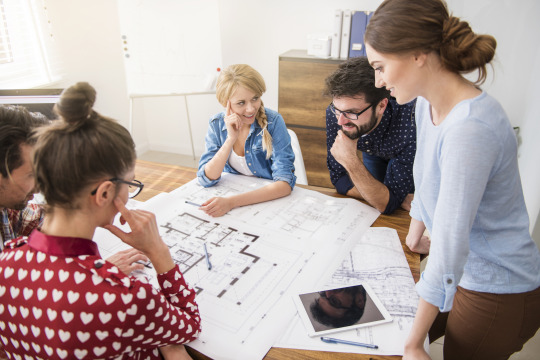
Join our comprehensive 2-year interior design program and master the art of creating stunning spaces. Unleash your creativity and excel in the world of interior design.
#2yearsinteriordesignprogram#2yearprogramininteriors#interiordesigningprogram#interiordesigntraining#interiordesigncourses#interiordesigncourse#2yearsprogram#fida#fidabangalore
0 notes
Text
Pursuing Your Passion: MBA in Interior Design
In the world of design and creativity, there's no shortage of opportunities for individuals with a keen eye for aesthetics and a flair for innovation. If you've ever dreamed of combining your love for interior design with advanced business acumen, then pursuing an MBA in interior design might be the perfect path for you. In this comprehensive guide, we'll explore the key aspects of an MBA in interior design, including its feasibility, the best MBA programs for interior designers, the duration of the degree, and its overall worth.
Can I do an MBA in Interior Design?
The short answer is yes, you can pursue an MBA in interior design. In recent years, the design industry has seen a shift towards recognizing the importance of business knowledge in addition to creative skills. This has led to the development of MBA programs tailored specifically for interior designers. These programs blend the art of interior design with essential business concepts, equipping you with the skills needed to thrive in the competitive design industry.
Which MBA is Best for Interior Designers?
When it comes to choosing the best MBA program for interior designers, there are several factors to consider:
1. Reputation: Look for MBA programs offered by reputable institutions known for their excellence in both business education and design-related disciplines.
2. Curriculum: A strong MBA program for interior designers should include courses on design management, project management, marketing, and entrepreneurship, among others.
3. Internships and Networking: Programs that offer internships, industry connections, and networking opportunities can greatly enhance your post-graduation prospects.
4. Location: Consider the program's location, as it can provide access to design hubs and potential job opportunities.
Notable institutions offering MBA programs in interior design include Harvard Business School, Columbia Business School, and the Stanford Graduate School of Business, among others.
How Many Years is an MBA in Interior Design?
Typically, an MBA program in interior design takes around two years to complete. However, some institutions may offer accelerated programs that can be completed in as little as 18 months. The duration can also vary based on whether you pursue the program on a full-time or part-time basis.
Which Course is Best in Interior Design?
In addition to an MBA, there are various interior design courses and degrees available to aspiring designers. The choice depends on your career goals and level of expertise:
1. Bachelor's in Interior Design: Ideal for those starting their design journey, this undergraduate program provides foundational knowledge and skills in interior design.
2. Master's in Interior Design: For those seeking advanced knowledge and specialization, a master's degree in interior design offers in-depth coursework and often requires a thesis or capstone project.
3. Certificate Programs: Short-term certificate programs are perfect for professionals looking to enhance their skills in a specific area of interior design, such as sustainable design or CAD (Computer-Aided Design).
Is an MBA Worth It for Designers?
The value of an MBA in interior design depends on your career goals and aspirations. Here are some factors to consider when evaluating its worth:
1. Career Advancement: An MBA can open doors to higher-level positions in design firms, such as design director or project manager, by equipping you with leadership and management skills.
2. Entrepreneurship: If you aspire to start your own design business, an MBA can provide essential knowledge in areas like finance, marketing, and business strategy.
3. Versatility: An MBA can make you a versatile professional who can navigate both the creative and business aspects of the design industry.
4. Networking: MBA programs often offer extensive networking opportunities that can lead to valuable industry connections.
On the flip side, an MBA can be a significant financial and time commitment, so it's essential to weigh the potential benefits against the costs before making a decision.
In conclusion, pursuing an MBA in interior design is indeed a viable option for those who want to marry their design passion with business acumen. The choice of the best program, duration, and overall worth depends on your individual goals and circumstances. With the right education and determination, you can carve a successful and fulfilling career path in the exciting world of interior design.
So, if you're ready to embark on this exciting journey, explore the various MBA programs and interior design courses available, and choose the one that aligns best with your aspirations in the ever-evolving field of interior design.
0 notes
Text

#fida#fidadesignschool#interiordesign#fashiondesign#interiordesigncourses#fashiondesigncourses#fidathedesignschool
1 note
·
View note
Text
#InteriorDesignCourses#DesignEducation#CreativeSpaces#DesignTrends#InteriorDesignCareer#DesignPassion#DesignInspiration#InteriorDesignSkills#DesignCourses#DesignProfession
0 notes
Photo
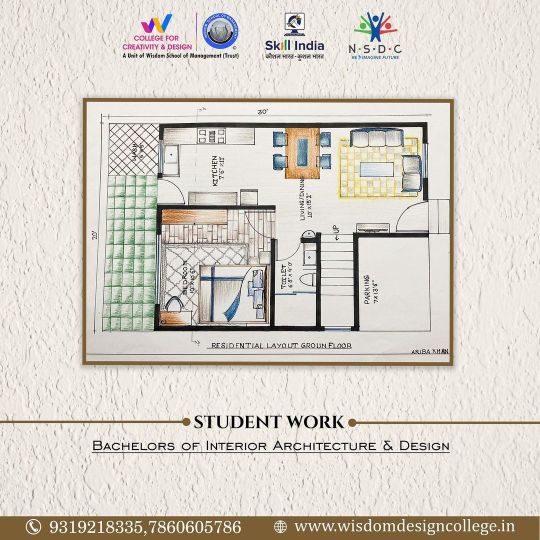
"Design is so simple. That's why it's so complicated." Learn Interior Architecture And Designing REGISTRATION OPEN VISIT US Today for Demo sessions & Experience by yourself. Hurry Up! For Details Call Us on:- 07860605786 / 09319218335 For More Information: http://www.wisdomdesigncollege.in Or Visit at: 2nd Floor, Kapoorthala Arcade Building, Near kapoorthala chauraha, lucknow-226024 2nd Branch: Vaishali Ghaziabad near Shopprix Mall #admissionopen #lucknowcourses #dreamzonekapoorthala #interiordesigncourse #interiordesign #interiordesigning #learninteriordesign #bachelorinfashiondesign #interiorarchitecture #wisdomcollegeforcreativityanddesign https://www.instagram.com/p/CrihnrOrT31/?igshid=NGJjMDIxMWI=
#admissionopen#lucknowcourses#dreamzonekapoorthala#interiordesigncourse#interiordesign#interiordesigning#learninteriordesign#bachelorinfashiondesign#interiorarchitecture#wisdomcollegeforcreativityanddesign
2 notes
·
View notes
Text
The world certainly will not be the same without Interior Designers sculpting it.
Want to be the one to make a difference in this world? With DreamZone's Interior Designing course, you too can start shaping your world.
For more details, check out - https://bit.ly/3q3VZNl
#dreamzone#interiordesigning#interiordesigningcourse#designingcareer#designingcourse#interiordesigningcareer#architecture#architect#architecturestudent#interiordesigncourse#moderninterior#interiordecor#interiordecorating#interiordecoration#interior
2 notes
·
View notes
Text

#HowToApplyForInterior Design & ArchitecturenAcademyUniversity
#youtube#interiordesigncourse#interiordesigndiploma#interiordesigninstitute#airoli#interiordesign#interiordesignnavimumbai#cbdbelapur#dronagiri#ghansoli
0 notes
Text

Ready to master the latest in interior design? Enrol now and turn your passion into a profession with Edoxi's Interior Design Course in Dubai!
Call us: +971 4380 1666
0 notes
Text
Interior Design Courses
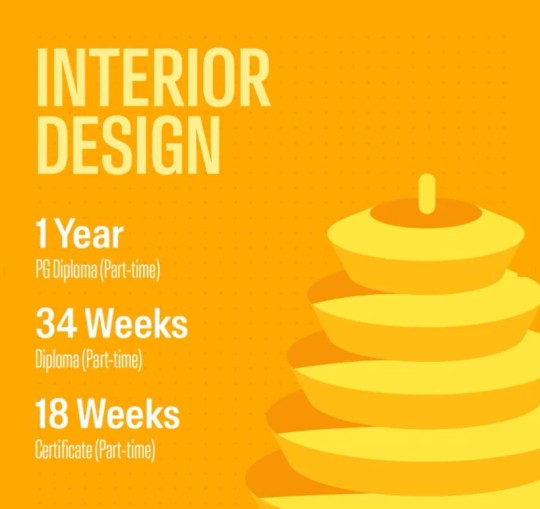
Upskill your Interior Design game with our Comprehensive interior design courses! Dive into the intricacies of residential and commercial projects, guided by industry experts who infuse real-world experience into every lesson. Elevate your skills at AND Academy and sculpt your design future!
Visit here : https://www.andacademy.com/interior-design-courses/
0 notes
Text
Shaping Designers of Tomorrow: Interior Design Institute in Kolkata
Interior design refers to art and science of enhancing the inside of a building. It is also true for other physical structures. However, interior design is in a league of its own. It is apart from more conventional types of embellishment. Interior design requires careful planning and careful consideration. It looks for careful coordination of all decorative elements. These elements are included inside a given area. Everything in a room has to work together according to the designer’s intent. It includes from the paint to the fixtures to the furniture to the architectural details. Having gone through the Interior Design Course In Kolkata, the designers get the right pathway for a perfect career.
#InteriorDesigningCoursesinKolkata#InteriorDesignCourses#InteriorDesignCoursesinKolkata#InteriorDesigntraininginKolkata#interiordesigntrainingschoolinKolkata
0 notes
Text
#interior design courses in mumbai#interior design institute in mumbai#interiordesigncourse#interior design
1 note
·
View note
Text

Discover the key to unlocking creative career opportunities with a Diploma in Interior Designing! Dive into the world of innovative design and explore endless possibilities. Elevate your skills and open doors to a fulfilling journey in the dynamic field of interior design. Start your creative odyssey today!
0 notes
Text
Exploring the Latest Trends in Fashion and Interior Design Courses
Introduction
In today's fast-paced world, creativity and innovation have become indispensable elements in various industries, especially in the design sector. From fashion to interior design, these fields continuously evolve, demanding skilled professionals who can keep up with the latest trends and concepts. This blog will delve into the exciting world of design education, focusing on the most sought-after courses in the industry—Fashion Design Courses, Fashion Communication Courses, and Interior Design Courses. Let's explore how these courses can unlock your creative potential and equip you with the knowledge to thrive in the design landscape of tomorrow.
Fashion Design Courses: Pioneering Creativity and Style
Fashion is an ever-evolving art form that allows individuals to express their identity and emotions through clothing. Fashion design courses provide aspiring designers with the essential tools to navigate this dynamic industry successfully. By enrolling in such a program, you'll immerse yourself in a world where you can experiment with fabrics, patterns, colors, and silhouettes while staying attuned to the latest trends.
The latest trends in fashion design courses emphasize sustainability, inclusivity, and technology integration. With growing concerns about the environmental impact of the fashion industry, sustainable practices and ethical design principles are at the forefront of modern fashion education. Understanding eco-friendly materials, upcycling, and reducing waste have become crucial components of fashion design curricula.
Additionally, the industry has recognized the importance of inclusivity and diversity. Fashion design courses now focus on embracing various body types, ethnicities, and cultural influences, ensuring that fashion caters to all individuals regardless of their background. This move towards inclusivity has not only diversified the runway but also opened up exciting opportunities for designers with fresh perspectives.
Furthermore, technology plays an integral role in reshaping the fashion industry. Cutting-edge software for pattern making, 3D design, and virtual prototyping are becoming standard tools for aspiring designers. Fashion design courses now incorporate these technologies, enabling students to stay ahead in this digital age.
Fashion Communication Courses: Bridging the Gap between Creativity and Consumers
While fashion design courses lay the groundwork for creating stunning apparel, fashion communication courses act as the bridge between designers and consumers. These courses delve into the marketing, branding, and storytelling aspects of the fashion industry. By understanding consumer behavior and market trends, fashion communication professionals can effectively promote fashion brands and collections.
The latest trends in fashion communication courses revolve around the digital realm. With the rise of social media and e-commerce, fashion brands are actively engaging with consumers online. As a result, courses now focus on social media marketing, influencer collaborations, and content creation for various digital platforms. By incorporating these elements, fashion communication courses ensure that graduates can navigate the rapidly changing landscape of digital marketing.
Moreover, storytelling has become a powerful tool for fashion brands to connect with their audience emotionally. Fashion communication courses teach students how to craft compelling narratives that resonate with consumers, making the brand's identity more relatable and memorable.
Interior Design Courses: Creating Functional and Aesthetically Pleasing Spaces
Interior design is an art that transforms spaces into functional, aesthetically pleasing environments. Interior design courses offer students the opportunity to explore various design styles, architectural principles, and spatial planning techniques. From residential to commercial spaces, interior designers have the power to shape the way people experience their surroundings.
The latest trends in interior design courses revolve around sustainable design, biophilic concepts, and smart technology integration. As environmental concerns grow, interior designers are adopting sustainable practices by using eco-friendly materials, energy-efficient lighting, and sustainable furniture.
Biophilic design, which draws inspiration from nature, has gained popularity as it enhances well-being and productivity. Interior design courses now emphasize incorporating natural elements like plants, water features, and natural light to create harmonious spaces that promote mental and physical well-being.
Furthermore, with the rapid advancement of technology, smart homes and offices are becoming the norm. Interior design courses now equip students with the knowledge to integrate smart technology seamlessly into their designs, providing occupants with convenience and enhanced living experiences.
Conclusion
The world of design is ever-evolving, and staying relevant requires continuous learning and adaptation. Fashion design courses, fashion communication courses, and interior design courses serve as gateways to the captivating world of creativity and innovation. Embracing the latest trends in these courses, such as sustainability, inclusivity, technology integration, digital marketing, storytelling, biophilic concepts, and smart technology, will not only unlock your creative potential but also prepare you to thrive in the dynamic design industry of tomorrow. So, take the leap, and embark on a journey of self-discovery and artistic expression through these transformative design courses. The opportunities are endless, and the future is yours to create.
0 notes
Text

Join Our Fashion & Interior Design and express yourself in every aspect of design
#hashtag#FashionDesignCourse hashtag#InteriorDesignCourse hashtag#LearnFashion hashtag#LearnInteriorDesign hashtag#FashionandInteriorDesign hashtag#DesignCourses hashtag#FashionandDesign hashtag#FashionandInteriorDesignCourses hashtag#CreativeDesignCourses hashtag#FashionandInteriorDesignLearning
0 notes